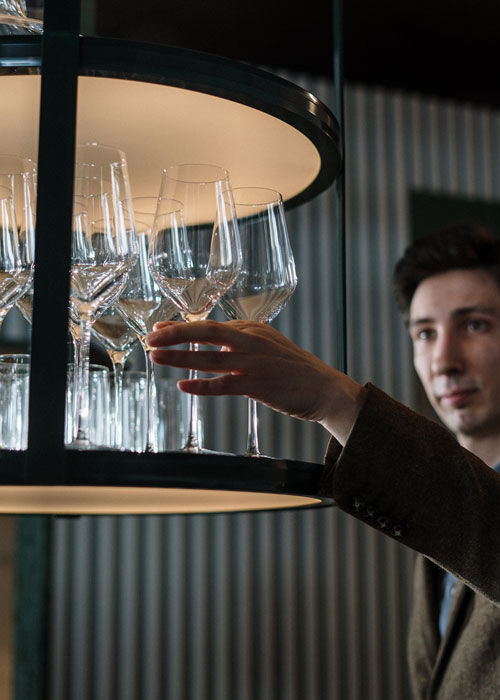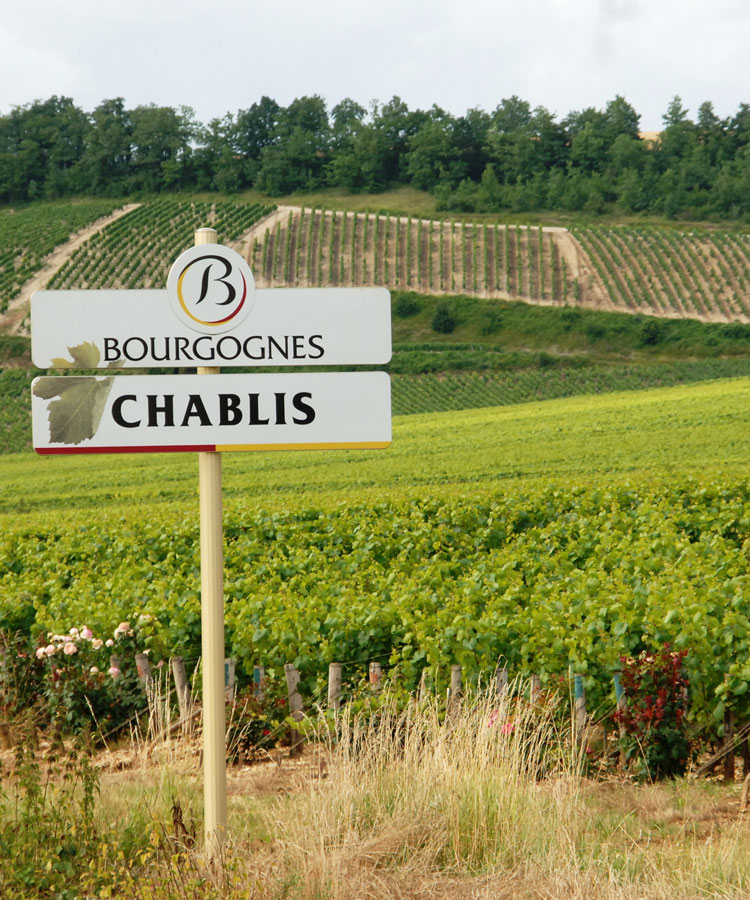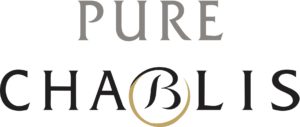
When sitting outside with friends on a warm day, Rick Arline, a sommelier in Los Angeles, says he always reaches for a bottle of Chablis. For him, this is the ideal time to drink the wine.
“I love the raciness, the acidity, the lean texture, and the way it seems to crackle when it hits your palate,” Arline says. “There’s nothing like Chablis.”
Arline joins a long legacy of sommeliers who share an affinity for Chablis. From the northern reaches of France’s Burgundy region, Chablis, made from the Chardonnay grape, is beloved for its complexity, its ability to transmit a sense of place, and its ease in pairing with a variety of foods.
Chablis has undeniable versatility at the dinner table. Master Sommelier Craig Collins of Austin, Texas, says he sees it as one of a handful of wines that can be served as an aperitif, as well as straight through a meal. While oysters are the classic pairing (the brininess of the bivalves is wonderful with the crisp wine), Chablis also has the bandwidth to stand up to spicy ceviche and richer dishes like pasta with lemon butter and king crab.
“It’s the perfect wine to bring to a dinner because you know it will pair with at least one course,” echoes Cristie Norman, sommelier at Spago Beverly Hills. That said, she’s been known to drink it poolside, too.
Confessing that she once subscribed to the misconception that Chablis was a “simple white wine,” Norman says that after tasting her way through many bottles, she now considers it one of the most layered and dynamic. It was Chablis that really helped her understand how terroir (a term that encompasses the soil, climate, and topography from which a wine is made) is translated through the final product.
Even though the region of Chablis is technically part of Burgundy, its wines tend to be more mineral-driven and have higher acidity than those made from Chardonnay from farther south in the Côte de Beaune. This distinction comes down to the cooler climate and the dramatic difference in soils.
The iconic minerality of Chablis is derived from the distinct oceanic soils, mainly Kimmeridgian limestone, which contain fossils, oyster shells, and other sea creatures from prehistoric times. “The soils date back over 150 million years to the Jurassic period, when the region was under water,” explains Catherine Fanelli, a sommelier at New York City’s La Compagnie des Vins Surnaturels. “To enjoy a glass of wine that has been cultivated in an area with such geological history is as fascinating as it is delicious.”
Chablis is divided into four designations: Petit Chablis, Chablis, Chablis Premier Cru, and Chablis Grand Cru. Chablis Grand Cru wines are only produced in the centralized choicest soils, on the hill. Petit Chablis is the farthest out and sits on a slightly different soil called Portlandian limestone, which is composed of fewer fossils than Kimmeridgian.

While many New World Chardonnay producers age their wines in new oak barrels (resulting in wines with toasty, caramelized notes), that usually isn’t the case in Chablis. For those Chablis Grand Cru and Chablis Premier Cru producers who do use oak, the barrels tend to be quite old, intended to bring oxygen into the wine as opposed to flavor. Today, many producers abstain from using oak at all — opting for stainless steel —especially for Chablis level and Petit Chablis wines.
That, says Emmanuel S. West Jr., sommelier and manager of Magdalena in Baltimore, is a big draw for his guests, especially those who avoid Chardonnay because of unpleasant experiences with overly oaked wines. “Chablis is a wonderful opportunity to experience Chardonnay in a very true sense,” he says, adding he finds it to be a reliable region in terms of quality and consistency. He recently loved the Chablis Premier Cru wines of Simonnet-Febvre, wines that show complexity and richness — without oak — that he describes as “right up [his] alley.”
For many sommeliers, the wines from Domaine François Raveneau and René & Vincent Dauvissat are the gold standard in Chablis. Those bottles command high prices, but the beauty of Chablis is that there are great wines for all budgets. Fanelli recommends the bottlings from Domaine Moreau-Naudet and Domaine Laurent Tribut, comparing both to the style of Dauvissat, while more approachable price-wise. Similarly, Arline looks to the village-level wines from Domaine Pinson, Daniel Dampt, and Patrick Piuze, calling them fantastic producers that won’t break the bank.
There are plenty of up-and-coming producers, too. Arline cites Domaine Lavantureux as an “underground sommelier favorite,” and it’s no surprise. Two brothers, Arnaud and David Lavantureux, put out consistent Petit Chablis year after year. There is a similar story with the young winemaker Pierrick Laroche at Domaine des Hâtes, who has exploded in popularity for his mineral-driven Petit Chablis wines. The father-son team at Domaine Camille et Laurent Schaller launched their own label after years of selling their vineyard fruit at the local co-op. Now their own venture includes village-level wines that Arline describes as “as sharp as a laser beam.” Two others to check out are Guillaume Vrignaud, whose wines showcase the elegance of both Portlandian and Kimmeridgian soils, and Domaine Christophe et Fils, also producing very terroir-driven wines.
Lately, Collins has been drinking Domaine Chanson Chablis, describing the 2018 vintage as a balance between soft Meyer lemon and sea-spray minerality. Domaine Chanson also makes a standout Petit Chablis, which Arline calls “bottled lightning.”
For those who champion the wines, memories involving Chablis seem to be particularly impactful. “I once spent a long day whale watching on a patio in Stinson Beach, Calif.,” Collins reminisces. “With a couple magnums of Chablis.”
Such situations make this mantra from Arline all the more convincing: “Drink more Chablis.”
Below are some recommended wines available for purchase!
Domaine Laroche, Chablis Saint Martin, 2019
William Fevre, ‘Champs Royaux’ Chablis, 2018
Domaine Jolly et Fils, Chablis Chardonnay, 2018
This article is sponsored by Chablis Wines.

